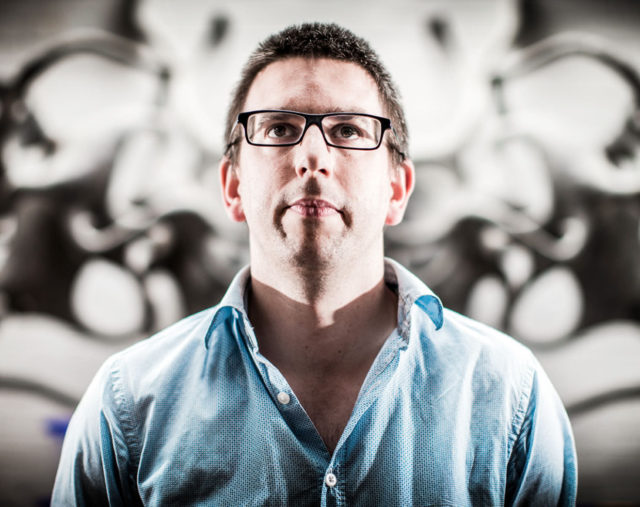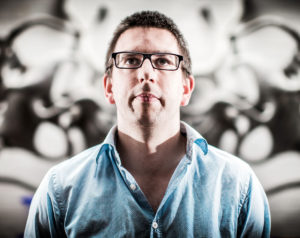
Nick Ervinck is an artist from the region of Lichtervelde in Belgium. Through his studies in architecture and art, he explored the boundaries between various media. In order to take advantage of the aesthetic potential of sculpture, architecture and design, he learned to think out of the box. His openness led him to 3D printing, a technique that has allowed him to achieve works which would otherwise not have been feasible.
While maintaining a close watch on 3D printing in the art industry, today he shares with us his experience as an artist.
What can we learn from you and the way you work?
The most important thing that I learned from one of my lecturers is the capacity to think out of the box. This enabled me to be original but also to develop a non-visual language and I think, that’s one of the most difficult things to learn because there is no book for that. No book will tell you what a good or a bad taste is, or simply what a good visual line is.
As far as my work and 3D printing are concerned, I work a lot with 3D printing but I still work with traditional techniques (fiber glass, etc.).
How did you come to 3D printing?
I got an invitation to do an exhibition in MoCA, the Museum of Contemporary Arts in Shanghai. As a young artist, I did not have enough budget to pay for expensive transport and other things regarding this matter.
However, I got the idea to build a sort of futuristic rock, IKRAUSIM. I was inspired by the garden of Yuyuan, situated on the shores of the Huangpu river in Shanghai. I was fascinated by the whimsical structures of the rocks. The forms reminded me of the sculptures of Henry Moore.
So, I started to use 3D printing because I had no idea how I can made my sculpture without this kind of technology. My idea was to complex my drawings.
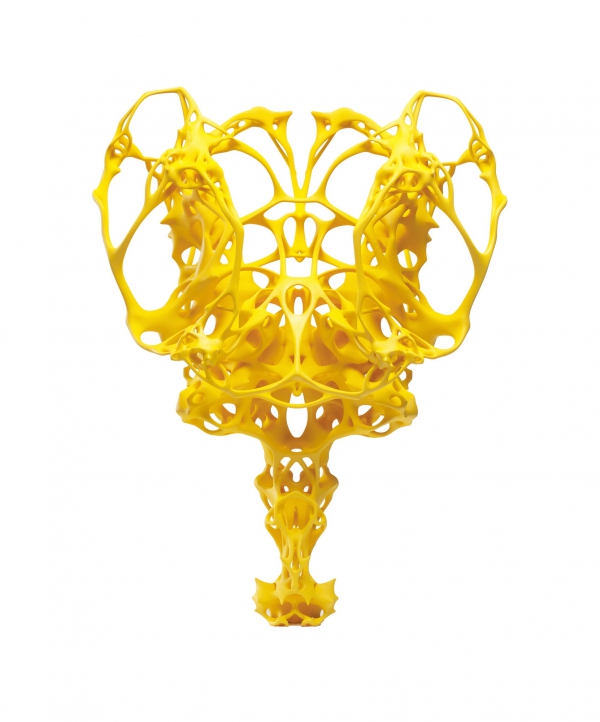
Are your creations only intended for exhibitions?
In addition to be an artist, I am also an entrepreneur. 3D printing being expensive, you have to find a way to pay the materials and services…so on the one hand, I make pieces for exhibiting, but I also hope to sell them, and on the other hand, I have a lot of commissions which came from the trophies I made for competitions. I made one for a big bicycle contest, designed another one for the European commission, and even another big contest in England. That’s the way I mix commissions and free work.
Tell us about two 3D printed sculptures that were really challenging for you. What challenges/difficulties did you encounter?
The blue head with the veins, AGRIEBORZ, is the first one. It took me almost 6 months to draw it and I had to convince engineers to print it. People would think I am crazy to design a piece within 6 months without knowing if it is actually technically possible to achieve it. But the pieces have been shown, and I am looking forward to showcasing it again.
Every vein is around 2 or 3 millimeters. It would be impossible to carve that on a manual level and, the symmetry would be impossible with such a complex shape.
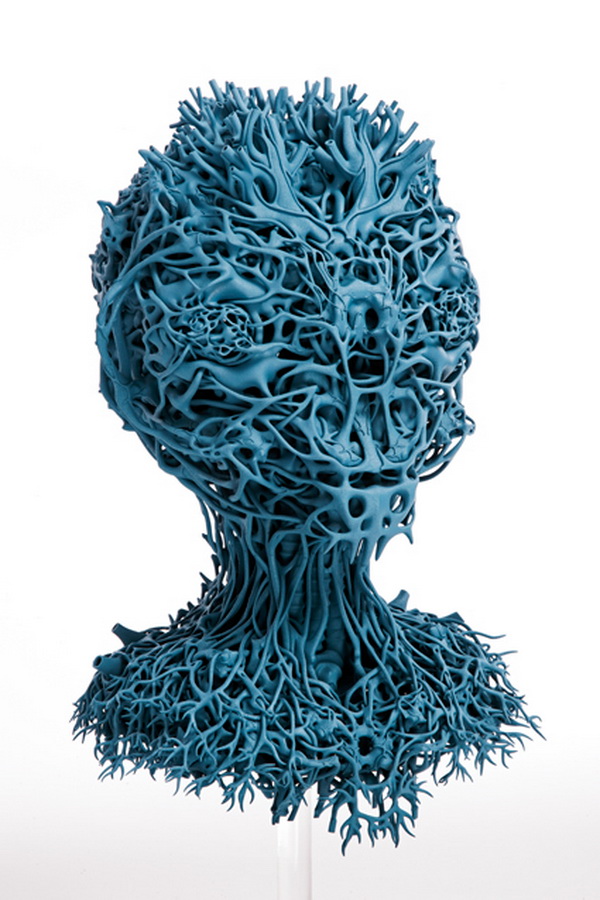
This year, I went even farther and I made a sculpture called NESURAK. It is a sort of side block sculpture linked to the Maya and the Inca Cultures but also the pop culture. It looks like a very big puzzle made using 3D printing technology.
It is a 3D printed piece of 90 cm height composed of 200 or 300 parts. I had to polish the pieces, then paint them all in details before assembling them. It took about two thousand hours to post process everything but it is worthy when you see at the end, the complexity and every detail that marks the achievement. It is only this kind of technology that gives you the possibility to do that.
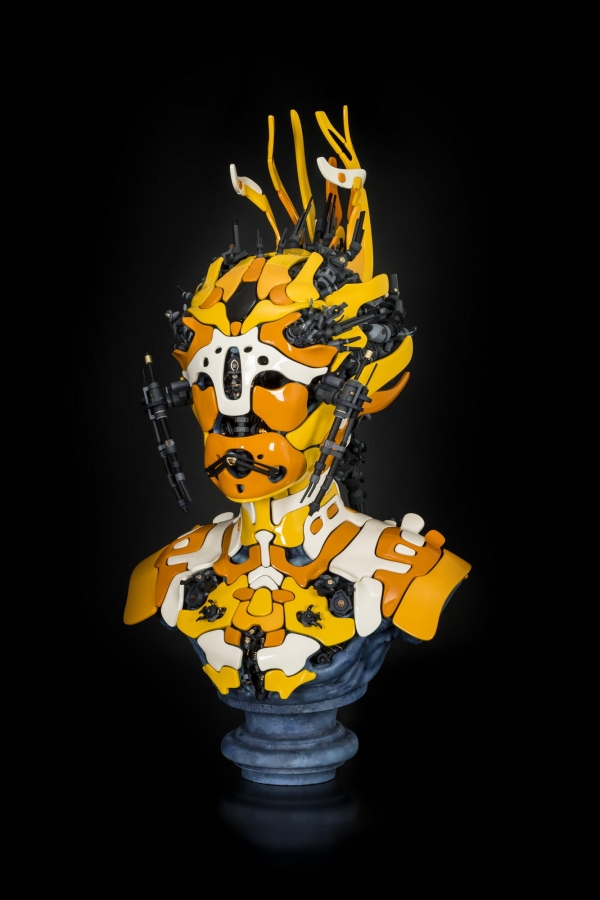
What do you think about the use of 3D printing in the art industry?
For now, it would be difficult to carry out an exhibition with 20 artists showcasing works only made with 3D printing. Nevertheless, since it brings innovation, 3D printing has an important place in the art industry as well as in the fashion and architecture fields.
Even though my generation is open to a communication dedicated to 3D printing technology, it must be said that most of the art schools do not teach yet these techniques. So, some people know art, others know 3D software but there is a rare combination of people who know both.
From my point of view, as an artist, it is important to know what is a sculpture today, what will sculpture be tomorrow and how one can add something extra to it. That’s a lifetime ambition.
What about your prospects of development?
During the last 3 or 4 years, I collaborated with Materialise and Stratasys, two 3D printing companies that innovate and bring to the market new 3D printing platforms. I am looking forward to challenging these new technologies and to create sculptures that would be impossible to create in another way.
Any last words regarding your work?
I am always looking forward to building up the next project and to thinking out of the box. Today I am also adapting myself as an artist who does not only work on one project but on several projects simultaneously.
//pagead2.googlesyndication.com/pagead/js/adsbygoogle.js
(adsbygoogle = window.adsbygoogle || []).push({});



